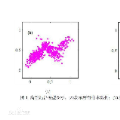Passive monitoring of acoustic or radio sources has important applications in modern convenience, public safety, and surveillance. A key task in passive monitoring is multiobject tracking (MOT). This paper presents a Bayesian method for multisensor MOT for challenging tracking problems where the object states are high-dimensional, and the measurements follow a nonlinear model. Our method is developed in the framework of factor graphs and the sum-product algorithm (SPA). The multimodal probability density functions (pdfs) provided by the SPA are effectively represented by a Gaussian mixture model (GMM). To perform the operations of the SPA in high-dimensional spaces, we make use of Particle flow (PFL). Here, particles are migrated towards regions of high likelihood based on the solution of a partial differential equation. This makes it possible to obtain good object detection and tracking performance even in challenging multisensor MOT scenarios with single sensor measurements that have a lower dimension than the object positions. We perform a numerical evaluation in a passive acoustic monitoring scenario where multiple sources are tracked in 3-D from 1-D time-difference-of-arrival (TDOA) measurements provided by pairs of hydrophones. Our numerical results demonstrate favorable detection and estimation accuracy compared to state-of-the-art reference techniques.
翻译:对声源或无线电源的被动监测在现代便利、公共安全和监视方面有着重要的应用。被动监测的一个关键任务是多点跟踪(MOT) 。本文介绍了一种针对多传感器MOT的巴伊西亚方法,用以对物体状态为高维的跟踪问题提出挑战,测量采用非线性模型。我们的方法是在要素图和合成产品算法(SPA)的框架内开发的。SPA提供的多式概率密度功能(pdfs)由高斯混合模型(GMMM)有效代表。为了在高地空间执行SPA的操作,我们使用了粒子流(PFL)。在这里,粒子根据局部差异方程式的解决方案迁移到极有可能发生问题的区域。这样就有可能获得良好的物体探测和跟踪性能,即使是在挑战多传感器模型和合成产品算法的情况下,单传感器测量的尺寸比物体位置要低。我们在被动声学监测假设中进行了数字评估,从1D时段时间间隔到1D的多来源,我们利用粒子流(TDOMA)的精确度测量结果,由一对一州提供的数字测量结果。



